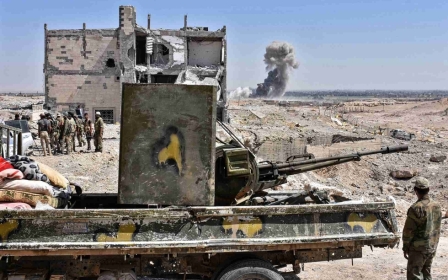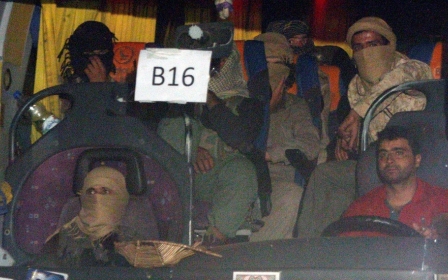US-backed SDF force says hit by Russian, government strikes in east Syria

A US-backed force battling the Islamic State group in eastern Syria accused government and Russian warplanes on Saturday of bombing its fighters.
It marked the first time the Syrian Democratic Forces, an alliance of Arab and Kurdish fighters, have said they have been hit by Russia.
The SDF and Russian-backed Syrian government forces are conducting parallel but separate offensives against IS in the strategic and oil-rich eastern province of Deir Ezzor.
Syrian government troops are waging an assault for the provincial capital, Deir Ezzor city, while SDF fighters battle the militants further east across the Euphrates river.
"At 3:30am on September 16, 2017, our forces east of the Euphrates River were targeted by Russian and Syrian regime warplanes in the Al-Sinaaiya area," the SDF said.
It said six of its fighters were wounded.
Al-Sinaaiya is an industrial area northeast of the city of Deir Ezzor, about seven kilometres from the east bank of the Euphrates.
"At a time when the SDF's brave forces are scoring great victories against IS in Raqqa and Deir Ezzor ... some parties are trying to create obstacles to our progress," the statement said.
Russia's military on Saturday denied that its warplanes had bombed the forces its spokesman told AFP.
"This is not possible. Why would we bomb them?" said military spokesman Igor Konashenkov at the Hmeimim base on Syria's coast.
De-confliction line
The SDF's assaults against IS in Deir Ezzor and in Raqqa further up the Euphrates valley are both backed by the US-led coalition, while regime troops are getting air cover from Russia.
SDF fighters say they not coordinating their Deir Ezzor operations with the government or Russia.
But the coalition says there is a de-confliction line to prevent the two offensives from clashing.
The line agreed between Russia, the government of President Bashar al-Assad, the SDF and the coalition runs from Raqqa province southeast along the Euphrates river to Deir Ezzor.
The skies over Syria have become increasingly congested as the six-year conflict has dragged on, with warplanes from the coalition, the Syrian government and Russia all carrying out air strikes.
Confrontations between the warplanes have been rare, but in June a US fighter jet shot down a Syrian warplane accused of bombing SDF units in the country's north.
Syria's crisis erupted with protests demanding the removal of Assad in 2011, but it has since morphed into a complex, multi-front war that has killed 330,000 people and displaced millions.
Dwindling territory
IS, which in 2014 overran swaths of territory across Syria, is seeing its zones of control dwindle even as it claims responsibility for bloody attacks abroad.
It once held most of Deir Ezzor province and its capital, encircling around 100,000 civilians who still lived in government-controlled neighbourhoods there.
But Russian-backed troops breached the IS sieges on the city earlier this month and are now working to shut off the militants' remaining escape routes.
IS has also been pushed out of two-thirds of its former bastion Raqqa by the SDF.
In desert territory just across the border in Iraq, security forces backed by tribal fighters are meanwhile manoeuvring into position to launch an offensive against one of IS's last remaining bastions.
After driving IS out of Nineveh province earlier this year, the Iraqi government set its eyes on Hawija, north of Baghdad, as well as the towns of Al-Qaim, Rawa and Anna in the western desert.
New MEE newsletter: Jerusalem Dispatch
Sign up to get the latest insights and analysis on Israel-Palestine, alongside Turkey Unpacked and other MEE newsletters
Middle East Eye delivers independent and unrivalled coverage and analysis of the Middle East, North Africa and beyond. To learn more about republishing this content and the associated fees, please fill out this form. More about MEE can be found here.




